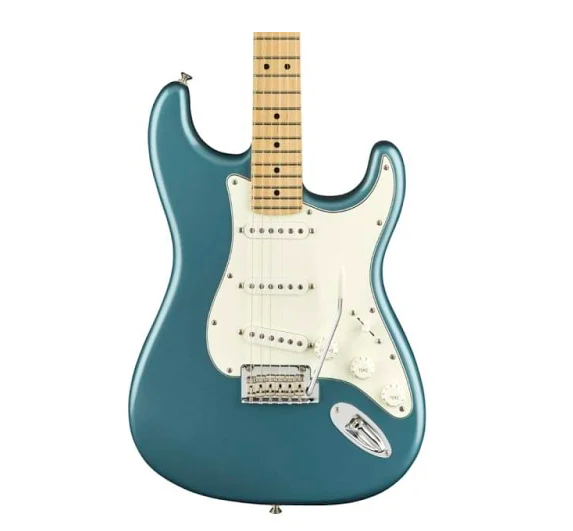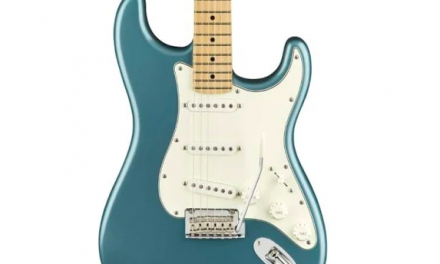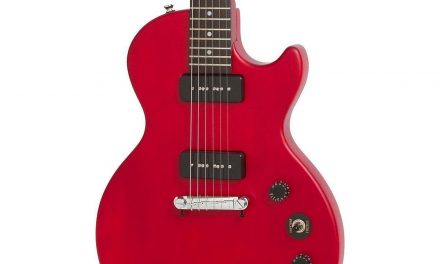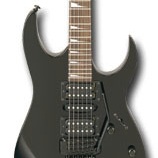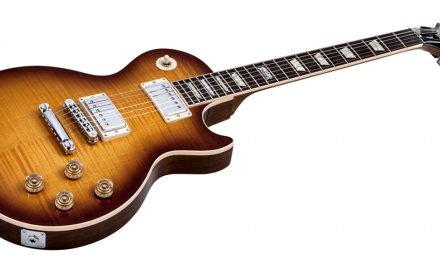Want to buy a Strat or a Tele? How about a handy checklist to bring to the store with you? Your wish is our… um, we already made one you can use. Here it is, in short form and long form.
Short Form
- Overall looks
- Check the action/intonation
- Check the neck straightness
- Play every fret
- Check the fret edges
- Check the neck edges
- Check the back of the neck
- Check the neck profile
- Check the tuners, pickups, pots, and output jack
- Check the fun
Long Form
- Overall looks. Do not buy something unless you like to look at it. A guitar that is ugly is less likely to be picked up by you.
- Check the Action/Intonation. Is the action too high or too low? You’ll be unable to evaluate the instrument if either is the case. Even the best Strat will seem a little buzzy if the action is too low. If the intonation is off, chords will sound out of tune.
- Check the neck straightness. You’ve seen people do this – hold the guitar up and look down the edges of the neck. It should be straight or have an ever so slight dip in the middle, aka neck relief. A non-straight neck is a nightmare and you should run if you find one.
- Play every fret. Start on the high E string and play every note on the neck. Do that for each string. If any of the notes buzz badly or don’t sing out, the guitar needs fretwork. Be sure to bend some strings – if the top of the fret isn’t smooth, the guitar needs fretwork.
- Check the fret edges. When you run your hand down the side of the neck, are you going to get cut up? Fret edges should be smooth. If not, fretwork required.
- Check the neck edges. Does the edge of the fretboard create a hard edge, or is it rolled? Rolled neck edges are more comfortable to play.
- Check the back of the neck. Is it smooth, or tacky? A lot of players like a satin finish on the back of the neck, but some players like it to be fully finished. Up to you, but before you decide what you like, play both. Also, does it have a skunk stripe that you can feel? Decide if that bugs you.
- Check the neck profile. This one is difficult – if you don’t know what you like, you might not be able to tell immediately. See below.
- Check the tuners, pickups, pots, and output jack. Everything is relative. If you’re trying a Strat out through a three thousand dollar amp, the pickups won’t matter much – it’ll sound great. 80% of your sound is your amp. If possible, play through the same amp you own. Pickups can be replaced down the road, but it’s nice to not have to. Make sure the pots work and aren’t scratchy, and make sure the output jack works correctly without cutting in and out. The tuners need to work, and again, they can be upgraded.
- Check the fun. If it’s not fun to play, don’t buy it. Some mediocre guitars are just fun to play. An instrument that does not inspire you will collect dust and might as well be broken.
Regarding #8 – Players who play with their thumb on the back of the neck a lot often find really thick necks to be uncomfortable. Most speed metal guys like a thin neck. Some people prefer a thicker neck because it’s more comfortable for their hand. You can’t tell this in two minutes – when you play a guitar for three hours, your left hand will have a pretty good idea whether the neck is comfortable. For novice players, it might hurt after three hours no matter what. Most modern Fenders have a “modern C shape” neck, which most players like – it’s not too thin, not too thick. One more factor – a lot of people believe that a thicker neck will give you more sustain and a better sound. I tend to agree, but I also believe that player comfort should be a higher priority. Learning what neck profile you really like is part of being a good guitar player.
With the exception of a straight neck and a neck profile, everything else can be fixed. But some things are easy and some are expensive. If you like to use your hands (to fix/repair/tinker with things,) you should get into guitar setup and repair, because it’s really fun and can save you lots and lots of money. Rolling the edges of a fretboard is easy and free. Filing down fret ends is also easy but requires practice. Doing a level/crown is not easy and requires a lot of practice. Doing a refret is expert level stuff you should leave to the experts. On a Fender, you can buy a brand new MIM neck for around $200, which is the price of a refret. Electronics are tricky and require practice.
You can find a $200-300 guitar that scores 90 – 100% on this scale. That’s a great budget guitar! Understand that any budget guitar that’s structurally sound can be improved, but unless you do the work yourself, it’s going to cost you money. If you look long and hard, you might find a guitar that scores really high on this list without needing more work. That’s a winner.
But also consider having your guitar shop set the guitar up for you when you buy it. Some people think this is a ripoff, but it isn’t. I’ve seen people ask a guitar center sales guy to lower the action on an American Strat so they could play it and consider whether they actually wanted to buy it. Not every sales dude at GC will do that. Most won’t. Almost every budget guitar could do with a proper setup, which is action, intonation, and truss rod adjustment. Again, let me just plug the idea that you can learn to do this stuff yourself and save money, but whether the shop does it or you do it, someone probably needs to.
Questions? Email me at richard@budgetguitarist.com.

